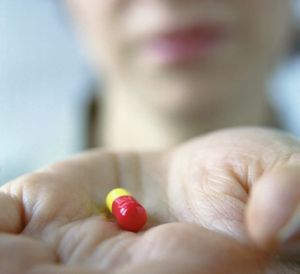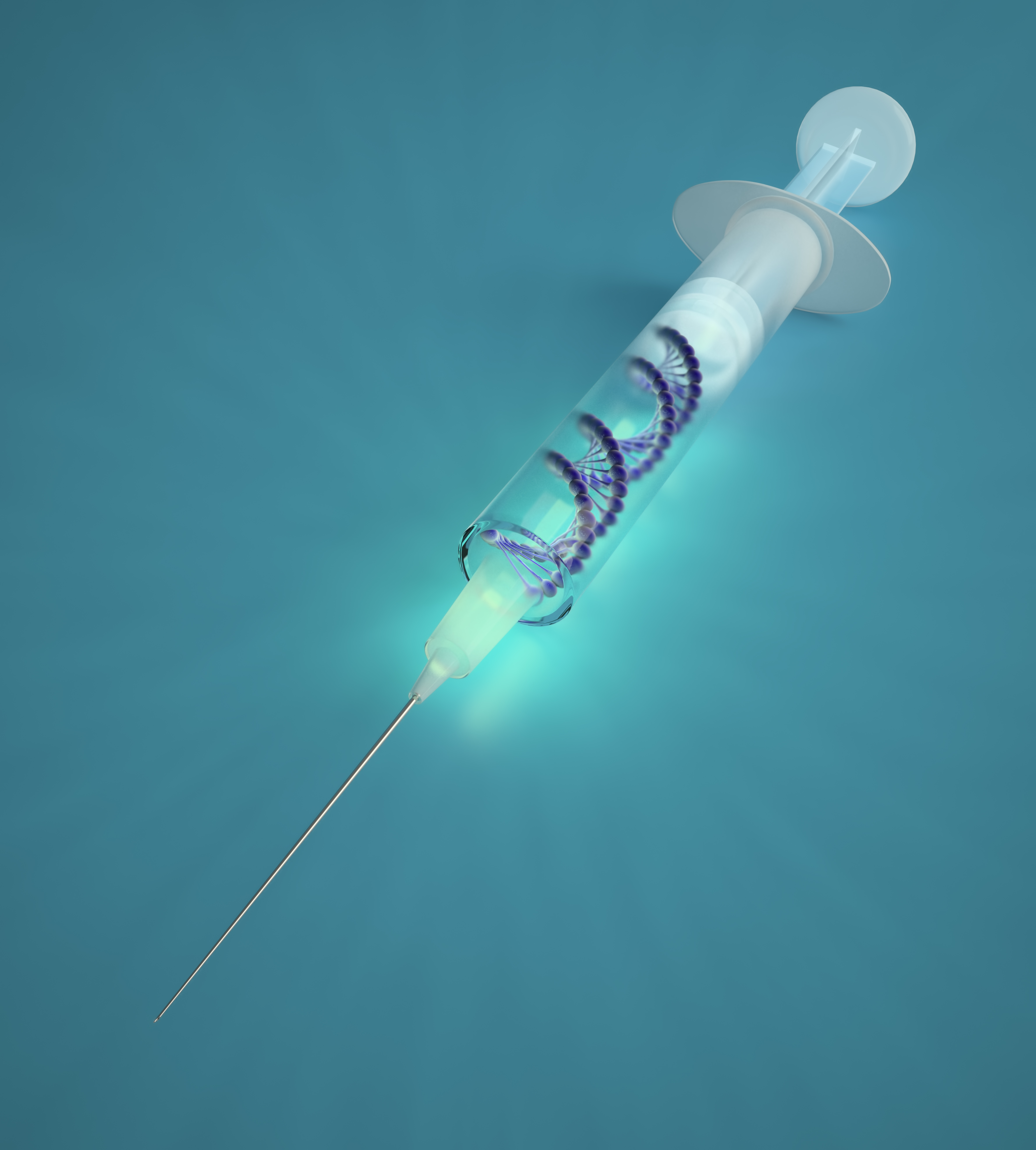
Updates from PTC Therapeutics and uniQure on their huntingtin-lowering trials
Both PTC Therapeutics and uniQure have shared updates from their respective clinical trials, testing different huntingtin-lowering approaches. We explore the data presented from both of these studies and what this means for HD family members.


On 21st June, both PTC Therapeutics and uniQure shared data from their respective clinical trials, both testing huntingtin-lowering as an approach to treat HD, but with different types of therapies. In this article we go through the data they each presented, what it all means and the next steps the companies will be taking.
Treating HD with huntingtin-lowering
Both PTC and uniQure’s approaches to treating Huntington’s disease draw on the basics of HD genetics. A gene called huntingtin becomes expanded, leading to an extra-long protein that is thought to damage brain cells. Dozens of pharmaceutical and biotech companies are working on therapies that try to decrease the amount of that long, faulty huntingtin protein, an approach known as huntingtin lowering. PTC and uniQure are two such companies which have ongoing clinical trials in this area although their approaches are quite different.

PTC: getting at genes by popping a pill?
Most huntingtin lowering drugs in development are aimed at the middle-man between the gene and the protein, a genetic messenger known as RNA. PTC’s drug, PTC-518, performs an intricate cut-and-paste step, so that now the middle-man is holding a stop sign. The cell’s machinery sees the stop sign and decides not to move forward with making the protein.
This type of drug is known as a splice modulator, and one major benefit of this approach is that it can be given by mouth. Based on data from animals we know that PTC-518 taken orally can reach many parts of brain and body without invasive procedures like a spinal injection or a brain surgery. PTC-518 targets both the expanded and regular forms of huntingtin so both versions of the protein are lowered following treatment with this drug.
uniQure: one shot therapy to lower huntingtin, forever?
We’ve written several times before about uniQure’s unique approach to treating HD – the first of its kind. Gene therapies create a fundamental change to a person’s genetics to try and treat or cure a disease. Although still targeting the genetic message molecule, uniQure’s approach with their drug, AMT-130, is quite different to PTC’s.
AMT-130 is a piece of man-made genetic material, packaged inside an empty, harmless virus, delivered to the deep parts of the brain via a surgery. The idea is that this one-time procedure will allow the therapy to spread into many brain cells, setting up little factories that continue to produce a genetic “antidote” for many years to come. This should prevent the huntingtin RNA message from producing so much huntingtin protein, in each brain cell that AMT-130 enters.
Updates from PTC
A pivot for PIVOT-HD
HDBuzz reported on the start as well as updates to the ongoing trial of PTC-518, so let’s recap. This roughly 3-month trial was planned to involve around 160 participants at sites throughout the US, Canada, Europe, and Australia. Participants would receive placebo or PTC-518 by mouth at a few different doses (5 mg or 10 mg), and visit study sites for evaluations related to safety, side effects, huntingtin levels in blood, and tests related to their movement, mood, and thinking abilities. Those who completed the study would have the option to enroll in an “open-label extension,” in which everyone receives PTC-518 and continues to have study visits periodically.
One unique aspect of this trial is that it was designed for people with very early signs of HD, potentially even before they are experiencing movement symptoms or major changes in their day-to-day abilities. But partway through, PTC announced a few changes. They decided to expand the study to include people with measurable movement symptoms and early difficulties with daily tasks, sometimes known as “manifest HD”. Additionally, they extended the drug trial period from 3 months to 12 months. Because of this lengthening, there were delays in getting approval to move forward from the USA’s Federal Drug Administration, so recruitment for the trial was paused in the United States but continued as planned elsewhere. We wrote more about these announcements in November of 2022.
Data shared from PIVOT-HD shows PTC-518 lowers huntingtin levels
At the same time that PTC shared these changes to the trial, they announced that they’d share data from the first, 3-month portion of the study in the first half of 2023. A helpful tidbit: when a company announces their intention to deliver news during a particular time window, it’s usually the case that they share in the latest part of that time window – in this case, late June 2023.
PTC held a meeting with investors and issued a statement sharing their findings from the PIVOT-HD trial to date. One of the key findings at this stage was huntingtin levels were reduced in people who received PTC-518, and that the group who received a higher dose of the drug, had a greater reduction in their huntingtin levels. This is positive news as it suggests that the effect on huntingtin levels is dose-dependent, i.e. the more drug you give, the greater the effect, so this will help guide future dosing strategies if this might need tweaking in subsequent phases of clinical testing.
“Huntingtin levels were reduced in people who received PTC-518”
The trial measured levels both of the genetic message and of the huntingtin protein molecule itself in blood samples from the participants. There was good agreement between these two measures which is what we would expect based on how the drug works by targeting the genetic message so this was an encouraging finding.
PTC-518 can move from the blood into the central nervous system
One common worry with drugs which are taken by mouth that are designed to treat brain disorders, is that it can be very difficult for these molecules to pass from the bloodstream to the central nervous system. In the study data presented, PTC measured levels of the drug in the bloodstream and spinal fluid and showed that PTC-518 does indeed make its way into the spinal fluid that surrounds the brain. The balance of drug levels in the blood and spinal fluid was fairly equal which is good news although it doesn’t give us information about whether the drug is able to get to the regions of the brain important in HD, such as the striatum, that PTC hope to target.
Treatment with PTC-518 appears to be well tolerated
Following the disappointing news from the Novartis VIBRANT-HD clinical trial which tested branaplam, a drug similar to PTC-518, which was halted due to bad side effects, everyone was very keen to learn how the PIVOT-HD trial might fare in terms of safety.
The data PTC presented from this small study was encouraging, showing that no treatment-related serious adverse events occurred and that any minor side effects experienced by participants in the trial (e.g. headache) were found at equal levels in both treatment groups as well as the placebo group, suggesting they’re not related to the drug itself.
Another readout of brain health are the levels of a protein called NfL. Levels of NfL increase when the brain is sick and it is well documented that NfL levels increase in people with HD over time as their disease progresses. PTC measured the levels of NfL in the spinal fluid of trial participants and saw small decreases for people who were treated with each dose of the drug compared to placebo. This is good news as other huntingtin-lowering trials have actually seen spikes or increased levels of NfL. However, the data are fairly variable, and only come from a short duration of treatment, so it’s not yet clear how significant this decrease is until more people are treated for longer.
Updates from uniQure
The HD-Gene-TRX trials so far
Given the novelty of HD gene therapy, current clinical trials of AMT-130 are in the early stages and are focused on ensuring safety. Across multiple small trials in the USA and Europe, only around 40 people with early HD symptoms have undergone the surgery, up to 26 in the USA and 15 in Europe.

A low and a high dose of AMT-130 are being tested in this trial. A few of those were “sham” surgeries, with no drug delivered, as a comparison group. Participants are very carefully monitored for a couple of weeks after the surgery, and then followed closely for a year with less frequent visits up to 5 years. They go to study visits and complete blood work, neurological exams, and assessments of their HD, like thinking and movement tests.
Last June 2022, uniQure shared some early data from the first cohort of ten people in the low-dose group – they didn’t observe any major safety issues, and huntingtin levels, though only measurable in a very small group, were trending down.
Then, in August, some dangerous neurological side effects were reported following 3 of the high dose surgeries, leading to a short pause. These were resolved for all the participants, such that in November, new surgeries could again move forward with some extra monitoring in place.
What we learned today about AMT-130
Since last November, we’ve been waiting for more data from uniQure about the ongoing trial of AMT-130, expected in June. This release involves two years of data from the first, low-dose cohort of ten, and one year of data from the second, high dose cohort of sixteen US participants.
The good news from uniQure is that the NfL spike which occurs after the surgery to deliver the drug does seem to return close to baseline by about 18 months and no further increases are observed. The change in NfL levels compared to controls in the long run are not really clear just yet though. No significant changes were observed in total brain volume either which is positive.
In terms of symptoms, uniQure reported several measurements made in treated patients. This includes a set of assessments that takes into account many aspects of a persons movement, called the total motor score. Compared to the expected trajectory of these changes in movements, patients treated with AMT-130 seemed to be doing a little bit better over 18 months.
A measure called total functional capacity encompasses how people are doing in their tasks of daily life. Patients treated with AMT-130 appeared to show a stabilization of this measurement, which includes milestones such as continued work, ability to do household finances, etc. Consistent with that, formal tests of people’s ability to think flexibly also seemed to stabilize, compared to the expected trajectory for HD patients.
However, some of the data shared by uniQure are a bit confusing to make sense of. When they looked at levels of huntingtin in the spinal fluid, this was decreased in the low dose cohort but increased in the high dose cohort when looking at the cohort averages. This could be due to a highly noisy dataset across just a small number of participants, or perhaps some technical issue with the huntingtin level measurements, but that isn’t known just yet.
“Patients treated with AMT-130 appeared to show some stabilization in total functional capacity”
It’s worth remembering that with AMT-130, in particular, that extreme caution is required, and we in the field are straddling a tricky divide. On the one hand, we want to have larger numbers of people treated with AMT-130 so that we can see robust changes in the measurements being done on the subjects. But remember, this is a very novel gene therapy with a virus that cannot be shut off! And so uniQure and regulators have to walk a tightrope between enrolling enough people to generate robust data and patient safety.
The bottom line and what’s next
Following many disappointing trial outcomes from other companies testing huntingtin-lowering therapies in the clinic, it’s encouraging to see progress from two different approaches.
The data presented by PTC are broadly encouraging and show that the drug appears to be working to lower huntingtin levels, as intended, with minimal side effects. It’s important to note that this trial is currently very small – data from a total of just 22 people were reported in this particular update. How these findings might change in a study with a larger cohort remains to be seen. We also don’t yet know if the observed huntingtin-lowering will lead to a halting or slowing of symptoms in people with HD. PTC stated in this update that they will use the data presented in this update to argue to the FDA for the trial enrollment to be recommenced at the US sites where it was previously paused. They will also now continue enrollment in their European sites.
Whilst the uniQure data are not necessarily discouraging, they are frankly not clear cut either. This is often the case with small trials where variability is high between participants so trying to work out if a drug is having a desired effect can be challenging. uniQure plan to continue recruitment of their trial in both the US and Europe, the former of which will also investigate treatment of AMT-130 and steroids at the same time, to hopefully reduce some of the side effects they have seen with this drug.
We will keep you posted on all fronts as things develop.
Learn more
Sources & References
For more information about our disclosure policy see our FAQ…


